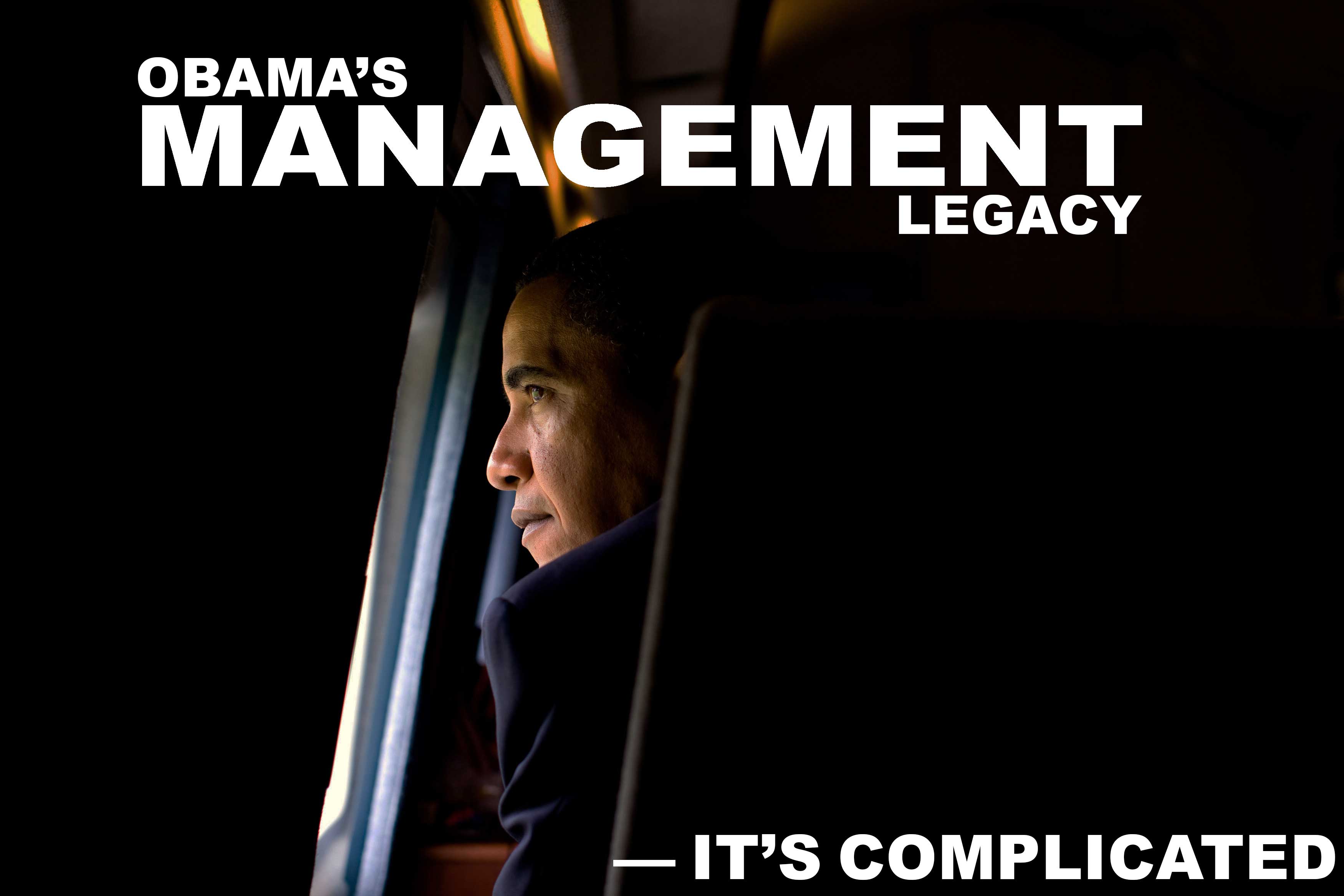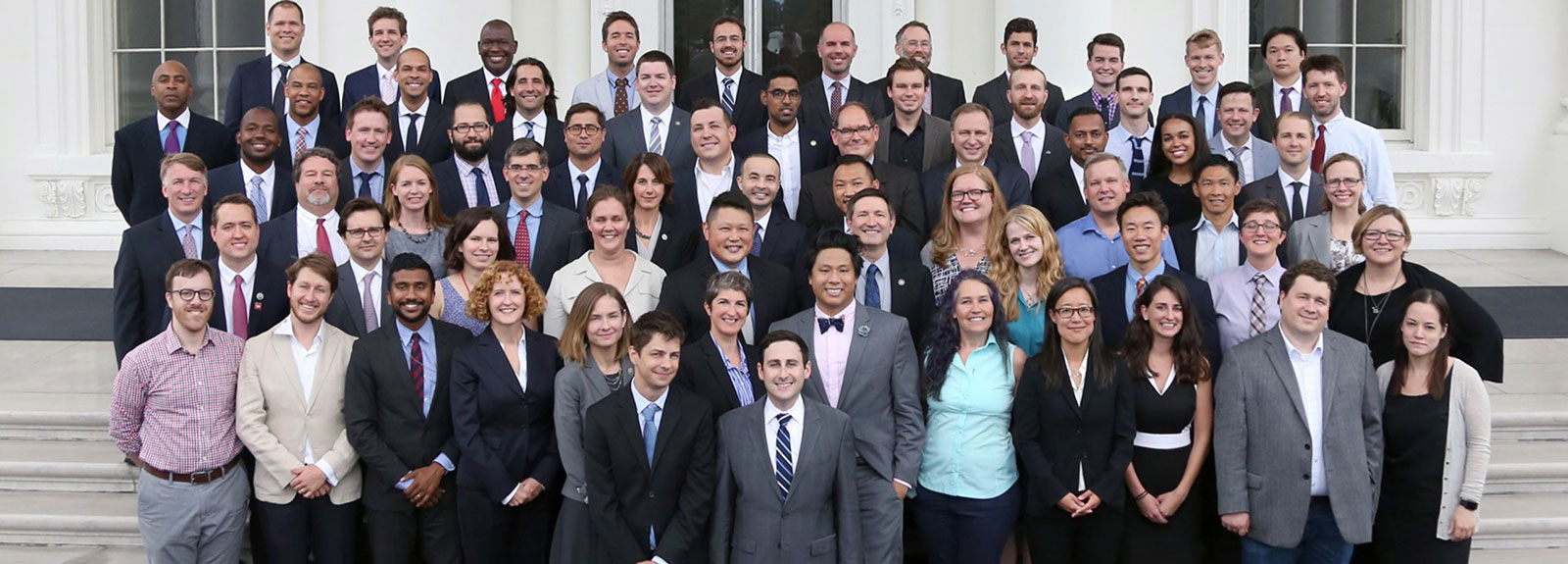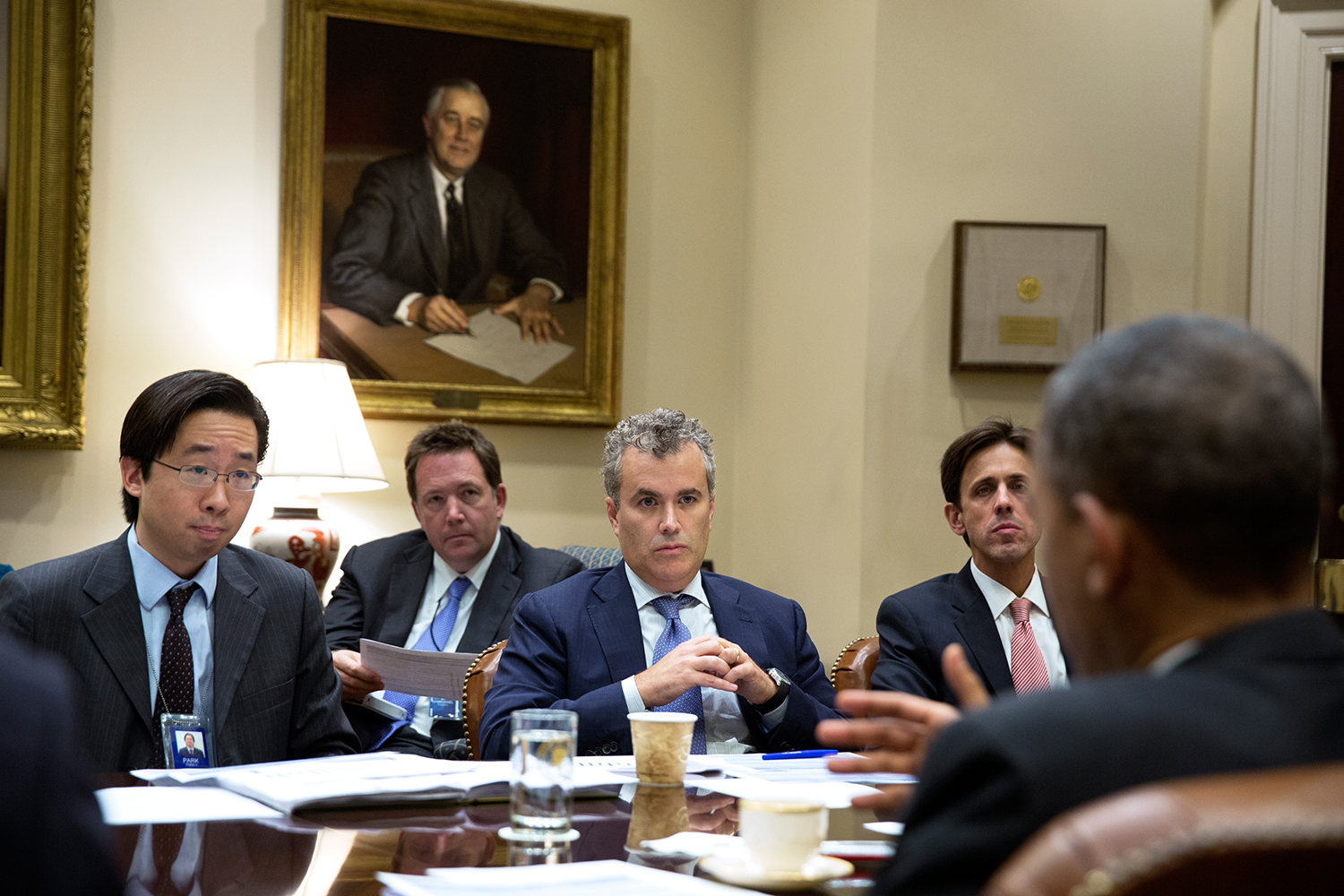

By the end of 2012, the Obama administration rightly took credit for a remarkable achievement: It had reduced violent crime at four of the country’s most dangerous Indian reservations by 55 percent through painstaking manual data collection, analysis of when and where certain crimes occurred, an influx of law enforcement officers on the reservations, and modern community policing methods. The accomplishment was a jewel in the crown of a 2009 White House initiative that required federal agencies to identify and commit to meeting a limited number of goals with high value to the public. According to the administration’s fiscal 2011 budget: “The goals must have ambitious, but realistic, targets to achieve within 18 to 24 months without need for new resources or legislation, and well-defined, outcomes-based measures of progress.”
The idea was to sustain that success, and then replicate it at hundreds of other reservations across the country struggling with intractable crime. But that’s not what happened.
To date, the average number of violent crimes at the four pilot Indian reservations is still down compared to the baseline the Interior Department uses to measure results (an average of violent crimes committed at the sites in 2007, 2008 and 2009). But if you look closely, you’ll see that 55 percent reduction has shrunk steadily over the past four years: 38 percent in 2013, 37 percent in 2014, 34 percent in 2015, and 19 percent in 2016, according to BIA statistics obtained from the department by Government Executive. While the administration still tracks the data, the resources and attention from the White House have dried up, and agency officials have moved on to other high-priority goals on a never-ending to-do list.
Overall, the number of violent crimes committed per 100,000 in Indian country was at 460 by the end of 2015, up from 454 in 2011, according to data on performance.gov. Many factors contribute to the problem, including poverty, unemployment, rampant alcohol and drug abuse, and a dearth of cops. The fact that the Obama administration moved onto other important items on their priority management agenda isn’t entirely to blame for the trend. But it certainly didn’t help.

Obama walks through the Rose Garden in 2011. (Pete Souza/White House)
“If we had continued watching it, and made sure that they were staffed, and everything was being done like it was during the initiative, we wouldn’t be in this problem,” said Charles Addington, who oversaw the initiative on the ground until 2013, and is now deputy associate director in the Bureau of Indian Affairs’ Office of Justice Services.
But, according to Addington, “OMB wasn’t telling us to watch it any longer, so we quit watching it. We went on to something else. Less work.”
Branding a Legacy
The Clinton administration had “reinventing government,” and the Bush team developed the Performance Assessment Rating Tool, or PART, to score federal programs and strengthen the tie between results and budgets. Those initiatives had mixed records, but they laid the groundwork for future administrations to continue focusing on the difficult and unglamorous tasks of making government more efficient and effective. Obama’s management agenda never had a catchphrase or clever branding, but that doesn’t mean it was a failure. In fact, there have been several pockets of success, particularly in streamlining government procurement processes to save money (known as “category management”), requiring agencies to share more administrative services, and using technology to make government more accessible to the public.
Shelley Metzenbaum, former associate director for performance and personnel management at the Office of Management and Budget during the Obama administration, characterized the president’s management legacy as an “unprecedented level of and smarter approach to public accountability,” an emphasis on open data and analytics in policy, and an effort to attract “innovative people and integrate them into the rest of the organization.”
Metzenbaum, now an independent consultant and senior fellow at The Volcker Alliance, said the Obama administration learned from, and built on, management practices and the approach toward accountability developed during the Bush years. “We had the advantage of seeing both what worked for them, and also looking much more carefully at the evidence.” But the idea of a scorecard and assigning agencies grades based on red, yellow, and green—a hallmark of PART—was too rigid and “frustrated” agencies, Metzenbaum said. “They learned a lot, but it turned out once you got to green because you’ve adopted specific practices, then it would include new practices, and then all of a sudden you were back to red.”
OMB’s approach under Obama, as Metzenbaum described it, sounds a little like those schools that encourage creativity, flexibility and independent thinking, and don’t hand out letter grades. “This was not about getting a grade, or meeting a target, it was about continuous improvement,” Metzenbaum said. “Do you know if you’re improving or not, and if you’re not, do you know why, and do you have a plan to deal with it?”
But sometimes the lack of a hard target or a concrete grade muddles things—and lets people off the hook for results. Then suddenly, violent crime is creeping back up on Indian reservations. Among some observers, the real knock on Obama’s management agenda is that it was scattershot: Lots of good ideas and initiatives were unveiled, but after an initial blitz of enthusiasm and short-term wins, the attention—and the resources—were diverted. Then progress stalled, or worse, there was regression.
“It’s hard to judge the results of the agenda because there is no real agenda,” said Robert Shea, Metzenbaum’s predecessor at OMB during the Bush administration, now a principal in the public sector practice at Grant Thornton, LLP. “It doesn’t have a clear framework, or the framework that they’ve arrived at took a while to get to.” Shea helped implement PART during his OMB tenure, and has worked closely with Republicans and Democrats in Washington ensuring performance management and evidence-based policy-making has a prominent place in every administration.

The Presidential Innovation Fellows program, launched as a pilot in 2012, is widely credited with making government more customer service-focused. Now part of the General Services Administration, Obama made the program permanent in 2015. (GSA photo)
As articulated officially by the Obama administration, the management agenda focuses on four pillars: effectiveness (“deliver smarter, better, faster service to citizens”); efficiency (“maximize the value of federal spending”); people and culture (“deploy a world-class workforce and create a culture of excellence”); and economic growth (“support innovation, economic growth, and job creation”). The administration, typically through OMB, the Office of Personnel Management, and the General Services Administration, has launched several initiatives over the last eight years designed to further the goals of each pillar.
Here’s just a sampling: strengthening the Senior Executive Service; creating the White House Leadership Development program for federal employees; making the federal workforce more diverse and inclusive by hiring more veterans and disabled individuals; launching websites (healthcare.gov, vets.gov, MyUSA) and mobile apps to improve the public’s access to information and services; selling federal real estate to save money; streamlining the federal hiring process. The White House also created the Presidential Innovation Fellows Program, which spawned 18F, a group of technologists recruited from the private sector for the General Services Administration to make government more customer service-focused; and the U.S. Digital Service, composed of the country’s top technorati embedded in agencies across government tasked with everything from cleaning up the disastrous first roll-out of the Obamacare website to consolidating websites to improve veterans’ access to benefits and services.
Those and other management agenda items have had limited success, sometimes because they didn’t get the sustained focus, or sufficient resources over Obama’s two terms to ensure their longevity. The initiatives to hire more vets and disabled individuals into government are exceptions. Both began as Obama executive orders, and have exceeded their hiring goals.
Another area where the administration has made real inroads is in shared services, which involves streamlining and consolidating payroll, financial management and other administrative functions across government to reduce duplication. But the Obama team didn’t invent the concept; it’s something the government has been refining for many years. David Wennergren, a long-time top career Defense official with extensive experience in IT management, said the Bush administration did a lot of work on shared services branded as “e-government” and “lines of business.” But when the Obama administration arrived, it “didn’t do anything with e-gov or lines of business.” That has since changed, and OMB in the last few years has focused on shared services to save money and make government more efficient.
“That’s all good, but I would say we probably lost some ground because things that were branded as a Bush administration agenda item weren’t necessarily embraced,” said Wennergren, now senior vice president of technology at the Professional Services Council. “You have to be sensitive to the ability to rebrand, but at the same time not lose momentum.”
The Housing and Urban Development Department in 2015 was the first Cabinet-level agency to migrate core financial management functions to a federal shared services provider, the Treasury Department’s Administrative Resource Center. This was the department’s third effort since the early 1990s to modernize its financial management systems. While the move has streamlined some administrative functions, the transition wasn’t seamless, according to a July 2016 report from the Government Accountability Office. The migration effort, known as New Core, revealed underlying weaknesses in HUD’s IT and project management, the watchdog said. “HUD faced challenges with sustaining leadership, coordinating among stakeholders, and aligning New Core with other IT modernization efforts. Going forward, it will be critical for the department to address these management and governance weaknesses in order to help ensure that the success of subsequent modernization efforts is not jeopardized,” the report concluded. The department transitioned 4 of 14 administrative functions to New Core over three years, ending its implementation in 2016. A 2015 inspector general report was similarly critical of HUD’s management of the migration.
"It’s hard to judge the results of the agenda because there is no real agenda."
- Robert J. Shea
Still, Shea said that the Obama administration has had “much greater success” than the Bush administration did with shared services. Another area that “shows promise” is category management, he added.
In December, GSA announced a 10-year strategy to weave shared services and category management permanently into the fabric of government, calling it an “innovative new vision for administrative mission support services that eliminates redundancy, reduces risk, and leverages government’s buying power to deliver administrative services that create a more effective government.” The idea is for the government to buy smarter and more efficiently, which essentially translates into buying in bulk.
“It’s one of the things that will pay off over time,” said Metzenbaum, who credited Anne Rung, Obama’s former chief acquisition officer now at Amazon, for launching the cost-saving acquisition strategy and championing it during her tenure. In February 2016, the administration announced that since 2009 smarter acquisition strategies had so far resulted in savings of $2 billion. According to OMB, the government is on track to save an additional $3.1 billion by the end of fiscal 2017. Before Rung left for the private sector last fall, she wrote a memo, published in the Federal Register, to institutionalize category management in government procurement.
Both shared services and category management are initiatives that emphasize the federal government “more as one enterprise” said OMB Director Shaun Donovan. “There’s no reason that we should be buying the same product in thousands of different contracts. That’s one way of thinking of the federal government as one. Shared services is another example.”
Donovan said he thinks there is “a real chance to sustain” parts of Obama’s management agenda in the next administration. “I think, generally speaking, the management side is less partisan in that way.”
21st Century Government
If George W. Bush was the first MBA president, then Obama was the first to aggressively recruit technology innovators to work in government. He appointed government’s first chief technology officer, and personally appealed to the stars of Silicon Valley to align their considerable talents in service to government. Obama outlined his larger vision for creating a pipeline of such talent in Washington during a 2015 interview with Fast Company, telling the magazine that his administration realized that the effort “could be a recipe for something larger.”
Obama’s focus on improving government by populating agencies with techies to work alongside employees fluent in bureaucracy was shaped, at least in part, by the healthcare.gov fiasco. The October 2013 rollout of the website—the primary way for people to sign up for health insurance under the Affordable Care Act—was rife with technical glitches. The technology and public relations disaster, which the Government Accountability Office blamed partly on the Health and Human Services Department’s poor management of the project’s contract, cost the government nearly $1 billion. Soon after the website crashed after its launch, the White House brought in Jeff Zients, a former Obama OMB official and current White House National Economic Council director, to manage the crisis and get the project back on track, with the help of several young USDS techies. Since the initial failure, online enrollment on healthcare.gov has been successful, and USDS counts it as one of its accomplishments.
Donovan said that the administration has “fundamentally changed the way the federal government approaches technology.” Obama, he said, “understood he was in some ways a generational shift as president” and knew that “government more broadly needed to allow citizens to access government in different ways.” Donovan, who has served as Obama’s HUD secretary and OMB director, said that while the president didn’t know exactly what his management agenda would look like at the start, he had a vision and a rough trajectory for what he wanted to accomplish. “A lot of these things were very much kind of in his mind,” said Donovan, relating a conversation he had with Obama when he interviewed for the HUD secretary job. “I wouldn’t say that that meant he understood exactly what the agile playbook would look like, but what he did was bring in real experts who started to shape that agenda.”
Michael Hettinger, who served as chief of staff to former Republican Rep. Tom Davis of Virginia and a former House Government Reform subcommittee staff director, said he thinks the Obama administration learned from the healthcare.gov failure, and that episode revealed how deeply the government’s IT problems could undermine its ability to expeditiously deliver goods and services to the American people. “When health care.gov hit, it elevated the need to do something about federal IT,” Hettinger said, citing the passage of the Federal Information Technology Acquisition Reform Act, which was part of the fiscal 2015 National Defense Authorization Act. Hettinger was the lead aide who drafted the 2004 Department of Homeland Security Financial Accountability Act. “I look at FITARA as a fundamental piece, similar to Clinger-Cohen, and the E-Government Act,” said Hettinger, now managing principal at Hettinger Strategy Group. “You are seeing IT and software management use FITARA as a baseline to move forward. Absolutely, a lot of the focus on federal IT has come from the health care.gov rollout failure.”

Obama meets with advisors Oct. 22, 2013, to discuss the botched rollout of Healthcare.gov. The debacle was a turning point for the administration, leading to an influx of outside tech talent into government. From left: Todd Park, Steven VanRoekel, Jeffrey Zients, and David Simas. (Pete Souza/White House)
So, does it matter that the focus on federal IT evolved out of pure crisis rather than part of an already defined management agenda? Not really, said Wennergren.
“From the standpoint of the citizen, if it’s management by attention, or management by embarrassment, as long as you focus your attention on it, it’s probably a good thing. Regardless of whether the Obama administration came in hungry to get health care to more Americans, or the Obama administration woke up one day and had a huge cybersecurity breach and had to take action on it, the end result is, did action get taken and is that action sticking, regardless of what the original stimulus was?”
Healthcare.gov in its current form might not stick, if congressional Republicans get their wish and are able to repeal Obamacare, but many hope that the new administration will maintain Obama’s emphasis on modernizing federal IT systems and persuading private-sector innovators to do a public-sector stint. Bringing that innovation to government through 18F and the USDS has been one of the administration’s hallmarks, but “a lot of questions of how they fit into the broader structure” will be explored when the Trump crowd officially arrives on the scene, said Hettinger.
During a June 2016 congressional hearing, Trey Hodgkins, senior vice president of the Information Technology Industry Council, said it’s been difficult to distinguish between USDS and 18F, calling their missions “vague” and their activities “opaque.” Hodgkins said that the “lack of clarity makes it hard to see these programs surviving a presidential transition.” If they do survive, he said, “changes have to occur in both programs to clearly define their mission and their place in the broader federal technology landscape. Maintaining business as usual in these programs, instead of implementing needed transparency and developing comprehensive data to demonstrate these activities offer a path to a better federal technology environment, would not position them well for future success.”
Data Dump
The Obama administration argues that it is the most transparent White House in history. Many journalists and lawmakers would disagree with that, but it’s true that the administration has made more information available through sites like performance.gov and data.gov than ever before. But it’s also true that Congress is responsible for much of that transparency—by forcing the executive branch to publish more information through laws like the 2010 Government Performance and Results Modernization Act and the 2006 Federal Funding Accountability and Transparency Act.
“The Obama administration has also proactively released more than 180,000 data sets on a federal government website named, appropriately enough, Data.gov,” wrote White House Press Secretary Josh Earnest in an Aug. 30, 2016 letter to the editor in The New York Times responding to a story on presidential transparency. “This means that reporters and citizens have access to mind-boggling amounts of data—that they may not even have known existed—without having to formally request it.”
The administration has "fundamentally changed the way the federal government approaches technology."
- Shaun Donovan

Obama talks with Megan Smith, U.S. Chief Technology Officer, and Dr. John Holdren, Director of the Office of Science and Technology Policy, during a 2014 technology strategy discussion. (Pete Souza/White House)
Mind-boggling is right. A user really has to know what she’s looking for, ensure she can find the correct data set, and then download copious amounts of information from enormous files housed on data.gov. Interpreting that information often requires help from government officials, who might not be willing to talk. Even if they are willing to clarify the data and provide context, it can take weeks for that request to wind through public affairs and whichever other offices need to approve it. That’s the process for a journalist; non-journalists typically have even less access.
In other words, dumping data on a website doesn’t necessarily create transparency. And according to at least one former member of the Senior Executive Service who worked at the Social Security Administration and GAO, it’s also not the sine qua non of a righteous management agenda.
“I don’t think a management agenda is going to be successful or unsuccessful based upon government perceptions of whether it is using data or not,” said Ira Goldstein, now retired managing director at Deloitte Services LP, and author of the book The Federal Management Playbook: Leading and Succeeding in the Public Sector. “One of the reasons I wrote this book is that we have to look to the outcomes of programs, and whether or not they are successful to the population they are intended to serve.”
Goldstein praised the Obama administration’s handling of the decennial census in 2010, which was a management success much more so than a technological one. “By any measure, it was more accurate and highly successful in a highly political environment,” he said. When serious issues emerged during testing related to new technology the Census Bureau planned to rollout, officials regrouped, decided to rely mostly on older technology to carry out the information collection, and improved the project’s overall management. The right management approach was crucial to modifying the original plan, and that’s partly why the 2010 census was a success and the healthcare.gov launch was a disaster, Goldstein concluded. “Affordable Care Act leaders were totally focused on creating the solution they envisioned within the original deadline and they expressed an often unrealistic confidence in their capability to achieve timely success,” Goldstein wrote. “Census leaders were flexible in abandoning their initial technology aspirations in favor of a less impressive but more reliable solution.”
Jon Desenberg, former director of government performance at The Performance Institute, called the performance.gov goals vague and “kind of meaningless.” The site is “a little bit of a smokescreen,” he said, because the information is buried and hard to decipher, even for reporters who use it in their work. Moreover, the data connected with federal programs doesn’t resonate with a lot of the public, Desenberg argued, in the same way that say, tracking how and where a city issues parking tickets would interest citizens living in that area. “No one is sitting in their basement crunching federal performance data,” said Desenberg, adding that it’s mostly used by contractors and the press.
Desenberg has a point, but it’s also true that the administration has done a decent job of trumpeting their successes, using a mix of data and stories to humanize thorny policy problems. HUD and VA tackled the problem of veteran homelessness and made real strides in “ending” it in various cities and communities across the government. Acting OPM Director Beth Cobert, a former top Obama OMB official who spent nearly 30 years at McKinsey and Company before joining the administration, elevated the use of data in improving employee engagement across the government and helping managers make better use of the annual Federal Employee Viewpoint Survey results, among other workforce initiatives.
"I don’t think a management agenda is going to be successful or unsuccessful based upon government perceptions of whether it is using data or not."
- Ira Goldstein
President Obama asked 27 heads of departments, agencies and a handful of high-profile federal offices to outline their accomplishments over the last eight years. The agency “exit memos,” released on Jan. 5, represented the administration’s last major public relations push on its achievements, including management agenda items, but they also provide insights into important issues and challenges the incoming Trump team will face.
Administration officials, including Cobert and Donovan, held an event in December to tout the career workforce and the White House’s management accomplishments. The event, which also featured remarks from employees, was a showcase of what the administration views as its “greatest hits,” mainly in the area of using technology to make government smarter, faster and more responsive to the needs of citizens. Officials ticked off what they view as their various accomplishments in a kind of swan song for the Obama administration. It sounded impressive, but it was also a dizzying data dump, including everything from making the college application and financial aid process easier for students and parents to navigate to reducing wait times at airports. It was kind of an apt analogy for the management agenda as a whole: smart people and ideas illustrating snippets of success here and there, but nothing to tie it together into a comprehensive framework or legacy.
What Survives in a Trump Administration?
It’s hard to know what any new administration’s management agenda will look like before Inauguration Day. That goes double for the incoming Trump administration, particularly since many of the Cabinet nominees and political appointees announced so far don’t have much government or Washington experience. But there’s no dearth of business experience among the Trump team, so some major management initiatives might resemble those developed during the George W. Bush era.
Realistically though, we could see an amalgamation of initiatives from the last few administrations. Since Clinton, presidents’ management agendas have tended to build on one another, rather than reinvent the wheel. The evolution of technology, and by extension, public expectations, consistently have driven the idea that the federal government needs to be more efficient, more effective, and more responsive. That’s unlikely to change, and it’s something Democrats and Republicans can agree on. So, while the goals generally have remained consistent, we can certainly expect the priorities and branding mechanisms to change.

President-Elect Donald Trump and President Obama shake hands after meeting at the White House in November. (Pablo Martinez Monsivais/AP)
President-elect Donald Trump has talked about making it easier to fire federal employees and strengthening accountability within agencies; he’s also said he wants every department head in government within his first 100 days to provide a list of wasteful spending projects for elimination. The real estate developer-turned-commander-in-chief also has demonstrated an interest in government contracting, and of course, has a fondness for negotiating the best deals. So it’s conceivable that category management, for example, continues to evolve in a Trump administration. Trump wants to reform several federal agencies, including the VA. Federal IT legacy systems are the culprit behind several high-profile cases of agency mismanagement over the last decade. Any new management agenda must take into account how the government continues to use technology to better deliver goods and services to the American people. Obama has said the federal government is an ocean liner, not a speedboat; the point is that change happens incrementally, and with a lot of effort. It’s something the incoming administration will quickly discover.
And it’s important to remember that it’s people—career federal employees—who execute the management agenda. “I do think that the next administration could gain a lot of ground by focusing on the motivation for people,” said Goldstein. “There’s a whole cohort of Millennials who are motivated by innovative solutions to difficult problems.”
The next administration also should accelerate governmentwide adoption of the performance- and evidence-based management begun under its predecessors, Shea and Metzenbaum have both said repeatedly. House Speaker Paul Ryan, R-Wis., is a fan of evidence-based policymaking, so that means Capitol Hill could put more pressure on the new administration to demonstrate measurable outcomes related to federal programs.
Civil service reform also could finally happen now that one party is in power in Washington, and federal employee accountability is all the rage. But it’s hard to know what form that will take. Faster hiring and firing? New pay-for-performance systems in agencies? A more modern personnel system that replaces the antiquated General Schedule? Civil service reform also could mean better pay and benefits for some, but not others. So far, the president-elect’s comments about federal agencies and employees haven’t been overwhelmingly positive, and there’s been plenty of harsh rhetoric coming from Capitol Hill for years.
“The pronouncements we’ve heard don’t suggest the tenor around federal employees is going to change,” Shea said. “I hope we’re proven wrong, really wrong, on that.”
